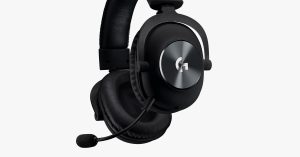The Galaxy Note is, and was, a great phone, and its diehard users have stuck with it for very good reasons. The bigger screen size, extra utility and the built-in stylus means it has the sort of hardcore usability its devotees love. It catered to a specific, albeit surprisingly-broad niche, who were happy sacrificing portability for power and utility.
Back then, $300 on contract with AT&T got you a 5.3-inch superphone that drew coos whenever it was pulled out of a pocket. It may not have been the first Phablet — not quite a phone, nor a tablet — but it was the device that made the category famous. It looked enormous compared to the Galaxy S, first launched in 2010 with a comparatively piddly 4-inch display.
As smartphones got more useful, companies were forced to cram in bigger batteries to sate our addiction to them. Bigger batteries meant bigger cases, which started an arms race of building phones with ever-larger display sizes to justify its size. Now, pretty much any flagship is the size of a table tennis bat, often almost as big as all but the most recent Note models.
If size isn’t the reason to buy one, then perhaps the Note 10 and 10+ have the performance chops to best the S10 and S10+? Sadly not, because the S10, at least on paper, has better specs in a number of areas compared to its pricier brethren.
Comparing the S10 and the Note 10, you’ll see that both pack a Snapdragon 855 SoC with an Adreno 640 GPU. Plus, the S10 comes with a microSD-card slot and a 3.5mm headphone jack, something Samsung historically liked to ding its rivals for not including. And, despite having a bigger screen, the resolution falls from 1440p down to 1080p.
The Note 10+ blurs the lines a little when compared to the S10+. The two are similar, but the Note 10+ packs 4GB more RAM (ignoring the pricey 1TB ceramic S10+) and a DepthVision sensor. Is that and 0.4-inches of screen real estate enough to convince you to spend another hundred bucks rather than getting an S10+?
My colleague Cherlynn Low made the point that the Note 10 is already too expensive, but it’s hard for me to justify the higher price of the Note 10+ either.
What’s left is the Stylus, and that’s likely going to only be cherished by a proportion of Note users. While not definitive, Digital Trends‘ admittedly unscientific poll said that more than 60 percent of Note users don’t use the stylus at all. It’s a niche tool on an already niche device.
Since the Galaxy Note can’t differentiate itself on size or performance despite the higher price, then what is it good for? Perhaps it’s time for the Note itself to die off and be reborn, possibly to coincide with the hopefully forthcoming Galaxy Fold. If Samsung can ever get it robust and reliable enough, then the Fold offers a 7.3-inch display in a body measuring 4.2-by-6.3-inches. That would be enough of a step beyond current smartphone sizes to justify its price and excuse its bulk. A phone for users who will be happy to sacrifice portability for power and utility.
The Note had the stylus, but it also had size, prestige and performance, three areas where the rest of the world has caught up. With the Galaxy S series now matching the Notes feature-for-feature, Samsung needs to find a more compelling reason than a pen for them to continue existing. If the company is smart, it’ll retire the Note next fall, and let the Fold take its place as the runaway device at the very top of its mobile lineup. Otherwise, we’ll just be wondering why it’s still here.
Catch up on all of the news from Samsung’s Galaxy Note 10 event here!
All products recommended by Engadget are selected by our editorial team, independent of our parent company. Some of our stories include affiliate links. If you buy something through one of these links, we may earn an affiliate commission.
After training to be an intellectual property lawyer, Dan abandoned a promising career in financial services to sit at home and play with gadgets. He lives in Norwich, U.K., with his wife, his books and far too many opinions on British TV comedy. One day, if he’s very, very lucky, he’ll live out his dream to become the executive producer of Doctor Who before retiring to Radio 4.




